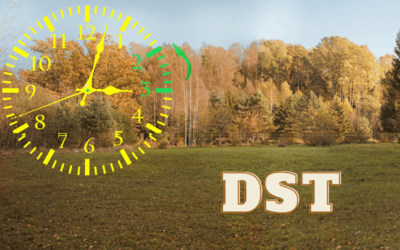What is daylight saving time?
Daylight Saving Time (DST) is a practice of adjusting the clock forward from standard time (usually by one hour) in the spring, and back again in the fall. The purpose of daylight saving time is to make better use of the greater amount of natural daylight available. In the Northern Hemisphere, DST typically starts between March and April, and ends between September and November. In the Southern Hemisphere, DST begins between September and November and ends between March and April.
Where is daylight saving time observed?
DST is not observed everywhere. In fact, of 195 countries in the world, only 71 or less than 40% observe DST in 2024. The list changes every year. In some countries, most but not all regions observe daylight saving time. For example, Hawaii and Arizona in the United States, some regions in Australia, and some parts of British Columbia in Canada do not observe DST. Among those do observe, there’s not a single standard. DST changes occur on different dates across the world.
How does daylight saving time impact life?
It might seem like shifting the clock forward by a single hour wouldn’t have much impact. But a single hour can make a big difference!
Clocks change automatically, but your body’s rhythms take time to adjust. So it takes time to physically and mentally “catch up” to changes in your normal routines for mealtimes, exercise, and mental effort. Daylight saving time has a negative impact on sleep, too. The springtime shift forward can decrease serotonin due to darker mornings and delay melatonin production due to lighter evenings, causing sleep deprivation. The switch back to standard time in the fall disrupts normal sleep cycles again.
In our connected world, DST makes coordinating events across time zones a lot more complicated. You have to account for the varying DST shifts across each involved time zone to schedule meetings and make travel plans.
For some people, DST can really complicate daily activities and scheduling.
- For global professionals, planning activities across countries requires consideration of the DST status in the locations of the participants, the start and end dates of DST, or no DST at all.
- Travelers have to consider changes in the local time in destinations before and after DST shifts.
- Staying in sync for calls and visits can be tricky for people with friends and family across the world, when DST causes shifts in different locations.
- Event organizers who coordinate online events for a global audience may need to change event times to accommodate the DST shift in certain locations.
- For remote teams, scheduling meetings with colleagues or clients in different time zones requires extra attention to avoid early or late work hours.
- Frequent time adjustments for people who commute across time zones can make it harder to maintain consistent schedules.
Outsmart daylight saving time with the right tools
Nobody knows what the future holds for Daylight Saving Time. Even though it’s not used by most countries, it is still used by the U.S. and most of Europe, major players in the world economy. However, there’s a lot of controversy even in these areas. In the U.S., over 700 state bills have been proposed to make DST permanent rather than continue the annual time changes. Despite the debate, DST is still widely in use. So, it’s important to be aware which DST challenges may impact your life and work, and choose tools that help you avoid problems and minimize DST stress.
Do your calendar and scheduling systems handle automatic time changes? If not, you’ll need to make the adjustments manually, which means a lot of attention will go into tweaking schedules and doing mental math of time differences. If that doesn’t sound like the best use of your time, take a look at Teamup: with automatic time zone conversions and all DST changes taken into account, it’s a lot easier to handle the DST shifts and get on with the things that matter in life.
Try for yourself with your own calendar or using this demo calendar. Experience how easy it is to change time zone and see all events automatically converted to the time in the time zone of your choice.
Try Teamup for easy time zone management
Current time in cities around the world
Automatic time zone support with Teamup



